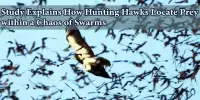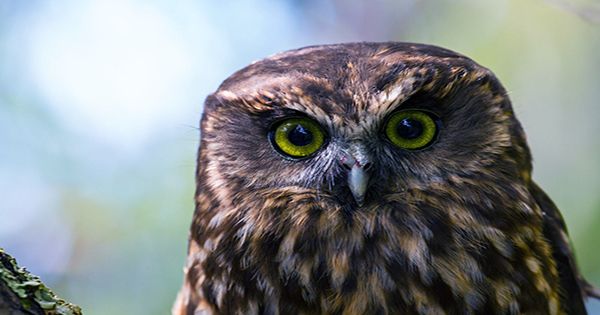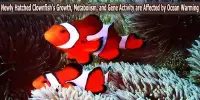Wildlife conservation specialists at Nottingham Trent University sought to learn more about how mammal populations were being impacted by the millions of animals that are killed each year on roads.
The research team analyzed data from earlier studies investigating mammal fatalities across 69 species and 150 populations of animals over a number of years.
They discovered that automobiles were also to blame for the mortality of animals categorized as threatened, vulnerable, and endangered, in addition to those from large natural populations.
Besides with smaller species like hedgehogs, squirrels, and otters, automobiles have also claimed the lives of macaque monkeys, black bears, wolves, pumas, elk, warthogs, wombats, bison, lynx, anteaters, sea lions, and even hippopotamuses.
Roadkill was discovered to be the most frequent cause of death in over a third (28%) of all populations tested, surpassing factors including disease, hunting, and animal predation.
A further 30% and 32% of all populations, respectively, experienced road deaths as their second and third largest cause of death.
Across some populations of animals up to 80% of all known mortality was as a result of collisions with vehicles, the study showed.
Although sheer numbers of animals killed have been published in the past, the researchers contend that they alone don’t tell us anything about how roadkill affects certain species.
They claim that in some instances, particularly for species with rapid reproduction rates or living in protected areas, a high roadkill rate had no negative effects on populations, whereas in other instances, even a low level of road mortality at the current levels could result in a potential population tipping point.
This study highlights the major threat roadkill poses to wildlife populations and the urgent need to find safe solutions. PTES funding supported the research into the impact of road deaths on giant anteater populations in the Cerrado, Brazil.
Nida Al-Fulaij
Species most likely to be killed on roads included common genets, Tasmanian devils, Virginia opossums, western quolls, common wallaroos, gray wolves, gray foxes, San Clemente island foxes, American black bears, African wild dogs, pumas and fox squirrels.
The study showed that more than half (58%) of all fox squirrel deaths in the populations studied were attributed to vehicles, along with almost half (46%) of Virginia opossum deaths.
Species where roadkill was considered to be at a concerning level for local population persistence included the “endangered” Iberian lynx, Tasmanian devils and African wild dogs, the “near-threatened” San Clemente island fox and the “vulnerable” giant anteater.
Although 38% and 48% of African wild dog and San Clemente island fox populations, both of which had diminishing populations, and 59% and 80% of the total mortality in two populations of Iberian lynx in Spain, respectively, were caused by car crashes.
50 Tasmanian devils from captive breeding programs were released into the wild, but 38% of them were killed on highways, and car accidents also cut the growth rate of giant anteater populations in half.
According to the research, some populations of giant anteaters may become extinct in around ten years if present roadkill rates continue.
The researchers also discovered that females were more frequently killed on roadways than was previously thought, which they claim is alarming because the loss of breeding-age females might have a more detrimental effect on a population’s survival than that of males.
The loss of females can also lead to the death of dependent juveniles through starvation or “infanticide,” the intentional killing of offspring by a male.
The study also revealed that adults were significantly impacted by roadkill, which is probably a result of adults’ increased propensity for wandering in search of mates and food.
According to the researchers, this is also concerning because population changes caused by changes in adult survival are most likely to occur in animals with extended adult life spans.
Due to their ecological significance, apex predators including fox species, pumas, wolves, wild dogs, bobcats, and coyotes may also be indirectly affecting other populations.
The overall impact of roadkill, according to the researchers, may be much bigger because there may be additional species whose populations are at serious risk but have not yet been researched.
“The extent of roadkill is far more shocking than we’d previously imagined and it is clear that it is implicated in a possible tipping point for some wild populations,” said lead researcher Lauren Moore of Nottingham Trent University’s School of Animal, Rural and Environmental Sciences.
She said, “While sometimes the raw numbers of animals killed may appear relatively low, roadkill can directly and indirectly contribute to mortality rates outnumbering reproduction rates, making populations vulnerable. The effect of roads on wild animal populations are one of the most pressing contemporary conservation issues and with road networks increasing globally we need to urgently address this.”
“Quantifying the impact of roadkill in this way is important in order to help influence road planning management and decisions, along with future mitigation work.”
Dr. Silviu Petrovan, study co-author and senior researcher at the University of Cambridge, said, “We all see roadkill when driving but, as this study shows, this mortality can have very different impacts for different species. This is a widespread and globally accelerating problem but to best focus on solutions we need to better understand which populations and which species are most at risk and target those.”
Nida Al-Fulaij, Conservation Research Manager at wildlife charity People’s Trust for Endangered Species (PTES) which part-funded the study said, “This study highlights the major threat roadkill poses to wildlife populations and the urgent need to find safe solutions. PTES funding supported the research into the impact of road deaths on giant anteater populations in the Cerrado, Brazil.”
“Further PTES funds are now supporting research into mitigation measures, such as the design of critical wildlife bridges for golden langurs in India, slow lorises in Java and hazel dormice here in the UK.”
The study, which also involved the University of Reading and Cardiff University, is published in the journal Biological Reviews.
















